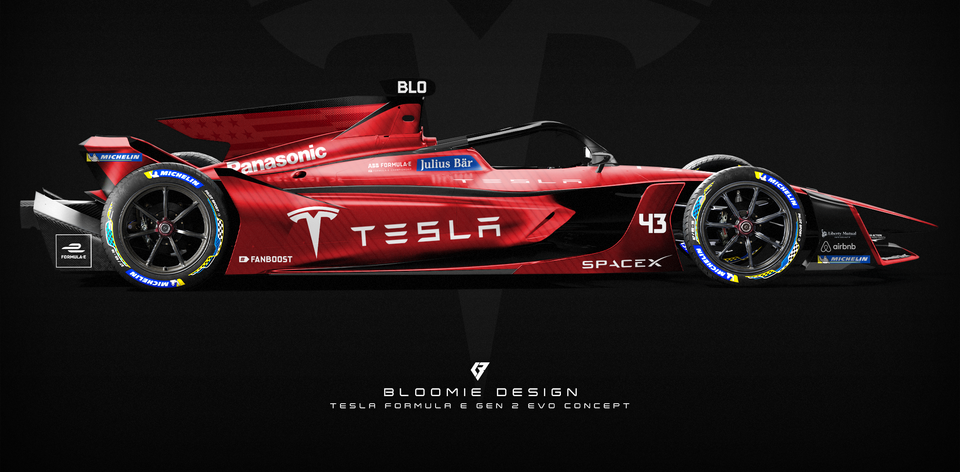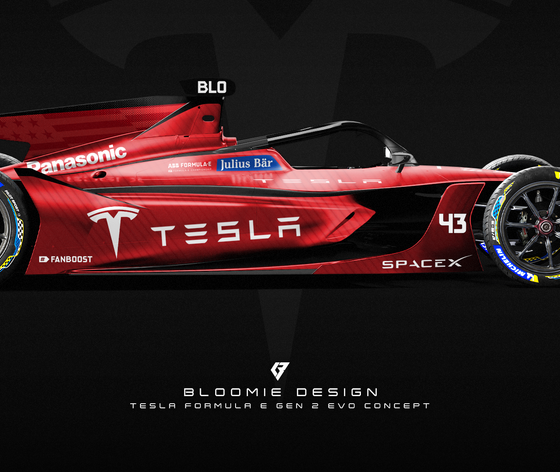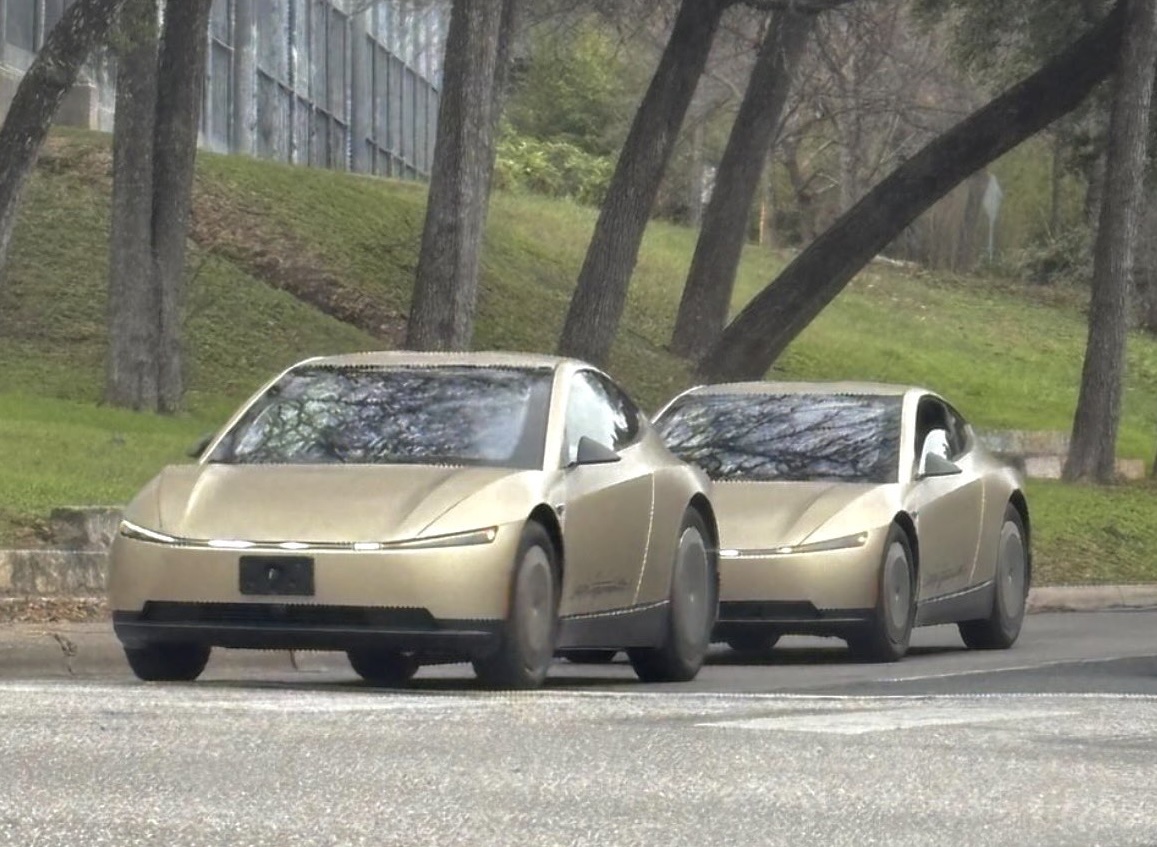

News
Tesla is primed for Formula E while its rivals are working in reverse
Tesla and Formula E: Will it ever happen? Probably not. At least, that’s what Elon Musk says, and he believes that production and scalability are more important. For the global EV scene, they certainly are, while professional motorsports are really just a trivial part of what Tesla does. While the company does build and create some of the fastest and highest-performing cars on Earth, it has no intentions of bringing them to a track or becoming a car company dedicated to winning shiny trophies. However, this didn’t stop other car companies from adopting different strategies.
Some companies, like BMW and Audi, for example, did their work in reverse. Years ago, when the Formula E Series became a real thing, these two companies were among the first to build a single-seat, all-electric powertrain that was extremely similar to the blazing fast F1 circuit. The only difference was that these new, sustainable racecars weren’t blaring loud motors for everyone to hear.
Instead of developing mass-market vehicles that would benefit the company in a multitude of ways, these automakers chose to work in reverse. Not focusing on building a reliable EV software infrastructure or production facilities to manufacture them in, German car companies went to their roots and focused o a few fast cars that would compete on the weekends at some of the toughest circuits in the world. But the problem is, they could have killed two birds with one stone by doing things in the correct order, which brings me to my next point: Tesla is already primed for Formula E, and it never had any intentions of competing.
A recent article from Bloomberg shows that BMW has decided to officially scrap its Formula E team at the end of this season, shifting its focus from racing and toward an intensifying EV market. The money it will save from not focusing on turning out fast laps at world-famous circuits will now be dedicated to developing EVs for consumers.
In the time that BMW has been racing in Formula E, it has only released one car: the i3, a boxy, widely unpopular car aesthetically. With plans to launch the iX, which it unveiled just last month, there are plenty of opportunities to establish a competitive lineup of all-electric cars in the future. But the focus has been all wrong from the start.
BMW didn’t have an overwhelmingly successful time in Formula E. Since it started racing in the series, which held its first race seasons ago, it has won only four races. But the company stated that it has “exhausted the opportunities to transfer Formula E’s pioneering racing technologies into passenger models.”
This is where the order of development may have been more advantageous for BMW. Now that their Formula E run is over, they have nothing to base passenger models off of, which pretty much puts them at square 1 if you take into account the i3 is not a widely popular or successful EV, to begin with.
This is where Tesla gains a real advantage in a hypothetical scenario where it would build cars for a racing series. Tesla has passenger vehicles now that could compete in several racing series, and other cars that actually have competed in racing forums like the Pikes Peak Hill Climb.
A big thanks to our long-time supporters and new subscribers! Thank you.
I use this newsletter to share my thoughts on what is going on in the Tesla world. If you want to talk to me directly, you can email me or reach me on Twitter. I don’t bite, be sure to reach out!
For example, the Roadster is 0-60 in 1.9 seconds, has a quarter-mile acceleration of 8.8 seconds, and seats four people. The powertrain is already powerful enough to compete in some racing circuits, but if Tesla were to refine it slightly and build a new, more reliable chassis that would benefit racing scenarios, there is no reason that the Next-Gen Roadster wouldn’t be extremely competitive in some racing series.
The Model S Plaid is another example. It has broken multiple records, including one at the Nürburgring in Germany (which is unconfirmed) and the Laguna Seca Raceway in California. It already has the handling, speed, and downforce to take on tough tracks that are windy and difficult to maneuver. It would just take some minor refinements to make it a “racecar.”
This is where Tesla gains a significant advantage in its structure. It is irrelevant whether the company will actually race some of its cars or not, but it would be ready today if it chose to. Meanwhile, other car companies decided to build racecars first, and after seven years of R&D, they have nothing that would contribute to a highly-effective passenger car. It is like baking a cake before putting any of the ingredients together.
It doesn’t bode well for these foreign automakers, either. Unfortunately for them, Tesla is pulling away. Every day, it seems like the company is improving in range or performance or battery tech that makes its lead in the EV sector a little bit bigger than before. Now, it has four passenger cars on the road: Two sedans, a crossover, and an SUV. It has a Supercar on the way, a truck coming in the next year, a Semi that will be launched shortly. The list goes on and on, it seems, and if Tesla wanted to race a car this weekend and be competitive, it could.
It almost sounds like the priorities of these highly-complex German car companies were simply out of line. They chose to do the fun stuff first instead of focusing on the real task at hand: Getting gas cars off the road and putting electric ones on it. Instead of worrying about the issues surrounding the manufacturing processes of EVs, which took Tesla several years to figure out (and it is still a work in progress), BMW will be forced to make a full-scale commitment if it wants to be competitive within the next ten years. The decision it made could be detrimental to the future development of the company’s EV fleet. It certainly has its work cut out for it.
And if you’re wondering, Musk said Tesla would not get into racing. The big picture deals with manufacturing and scalability, and racing is really the last of the CEO’s concerns.
On behalf of the entire Teslarati team, we’re working hard behind the scenes on bringing you more personalized members benefits, and can’t thank you enough for your continued support!

Elon Musk
Elon Musk: Tesla Model Y is world’s best-selling car for 3rd year in a row
The Model Y has now established an impressive streak that would otherwise have been impossible before Tesla.

Elon Musk has announced that the Tesla Model Y has become the world’s best-selling car by volume for the third consecutive year, capping 2025 with another dominant performance.
The Model Y has now established an impressive streak that would otherwise have been impossible before Tesla.
Three years in a row
Musk posted on X: “Tesla Model Y is now officially the world’s best-selling car for the third year in a row!” The CEO’s comment echoed an update that Tesla included in its 2025 recap, which highlighted, among other things, the Model Y’s incredible streak.
The Model Y has held the title since 2023, outperforming traditional leaders like the Toyota RAV4 and Corolla thanks to its bang-for-the-buck nature and its stellar combination of practicality, performance, and tech. The Model Y is also lauded as one of the safest vehicles on the road, making it an ideal choice for families in key markets such as China.
An impressive 2025
The Model Y’s sales feat in 2025 is especially impressive considering the introduction of the vehicle’s new variant. Tesla’s changeover to the new Model Y across its global factories resulted in sales being paused for some time in the first quarter. As per Tesla’s Q1 2025 vehicle delivery and production report, “the changeover of Model Y lines across all four of our factories led to the loss of several weeks of production in Q1.”
This suggests that the Model Y’s sales remained strong in 2025 to the point where it could still claim the title of the world’s best-selling vehicle by volume, even with its sales being throttled during the first quarter of the year. It would then be interesting to see just how far the Model Y can go in 2026, especially considering the rollout of new variants like the six-seat extended wheelbase Model Y L, the affordable Model Y Standard, and the top-tier Model Y Performance.
News
Tesla shares epic 2025 recap video, confirms start of Cybercab production
The cinematic montage, posted by the official Tesla account on X, celebrated the company’s progress in EVs, energy, and Robotaxi development.

Tesla has released an epic year-in-review video for 2025, recapping some of its major achievements from refreshed models to autonomy breakthroughs and production ramps.
The cinematic montage, posted by the official Tesla account on X, celebrated the company’s progress in EVs, energy, and Robotaxi development while looking ahead to an even bigger 2026.
Tesla’s 2025 highlights recap
Tesla has had a busy 2025, as highlighted in the recap video. The video opened with Elon Musk explaining the company’s pursuit of sustainable abundance. A number of milestones were then highlighted, such as the rollout of FSD v14, Optimus’ numerous demos, the opening of the Tesla Diner in Hollywood, LA, the completion of the world’s first autonomous car delivery, and the launch of the Robotaxi network in Austin and the San Francisco Bay Area.
Tesla also highlighted several of its accomplishments over the year. As per the company, the Model Y was the year’s best-selling vehicle globally again, and Teslas became more affordable than ever thanks to the Model 3 and Model Y Standard. Other key models were also rolled out, such as the refreshed Model S and X, as well as the new Model Y, the new Model Y Performance, and the six-seat, extended wheelbase Model Y L.
The Megablock was also unveiled during the year, and the Supercharger Network grew by 18%. Over 1 million Powerwalls were also installed during the year, and the Cybertruck became the first EV truck to get both an IIHS Top Safety Pick+ award and an NHTSA 5-Star safety rating.
Cybercab production confirmed
Interestingly enough, Tesla also confirmed in its 2025 recap video that the production of the Cybercab has started. This bodes well for the vehicle, as it could result in the vehicle really being mass-produced in the first half of 2026. Elon Musk confirmed during the 2025 Annual Shareholder Meeting that Cybercab production should earnestly start around April 2026.
Musk has also noted that the Cybercab will be Tesla’s highest-volume vehicle yet, with the company aiming for an annual production rate of about 2 million units. “If you’ve seen the design of the Cybercab line, it doesn’t look like a normal car manufacturing line,” Musk said earlier this year. “It looks like a really high-speed consumer electronics line. In fact, the line will move so fast that actually people can’t even get close to it.”
News
Tesla Cybercab is changing the look of Austin’s roads, and it’s not even in production yet
Videos and photos showed the sleek, two-seat autonomous vehicles navigating traffic.

Even before entering production, Tesla’s Cybercab is already transforming the appearance of Austin’s streets, with multiple prototypes spotted testing in downtown areas recently.
Videos and photos showed the sleek, two-seat autonomous vehicles navigating traffic. Interestingly enough, the vehicles were equipped with temporary steering wheels and human safety drivers.
Recent Cybercab sightings
Over the weekend, enthusiasts captured footage of two Cybercabs driving together in central Austin, their futuristic silhouettes standing out amid regular traffic. While the vehicles featured temporary steering wheels and side mirrors for now, they retained their futuristic, production-intent exterior design.
Industry watcher Sawyer Merritt shared one of the vehicles’ videos, noting the increasing frequency of the autonomous two-seater’s sightings.
Previewing the autonomous future
Sightings of the Cybercab have been ramping in several key areas across the United States in recent weeks. Sightings include units at Apple’s Visitor Center in California, the Fremont factory test track, and in Austin’s streets.
The increased activity suggests that Tesla is in overdrive, validating the autonomous two-seater ahead of its planned volume production. Elon Musk confirmed at the 2025 Shareholder Meeting that manufacturing begins around April 2026 with ambitious targets, and during an All-Hands meeting earlier this year, Musk hinted that ultimately, Tesla’s factories should be able to produce one Cybercab every 10 seconds.







